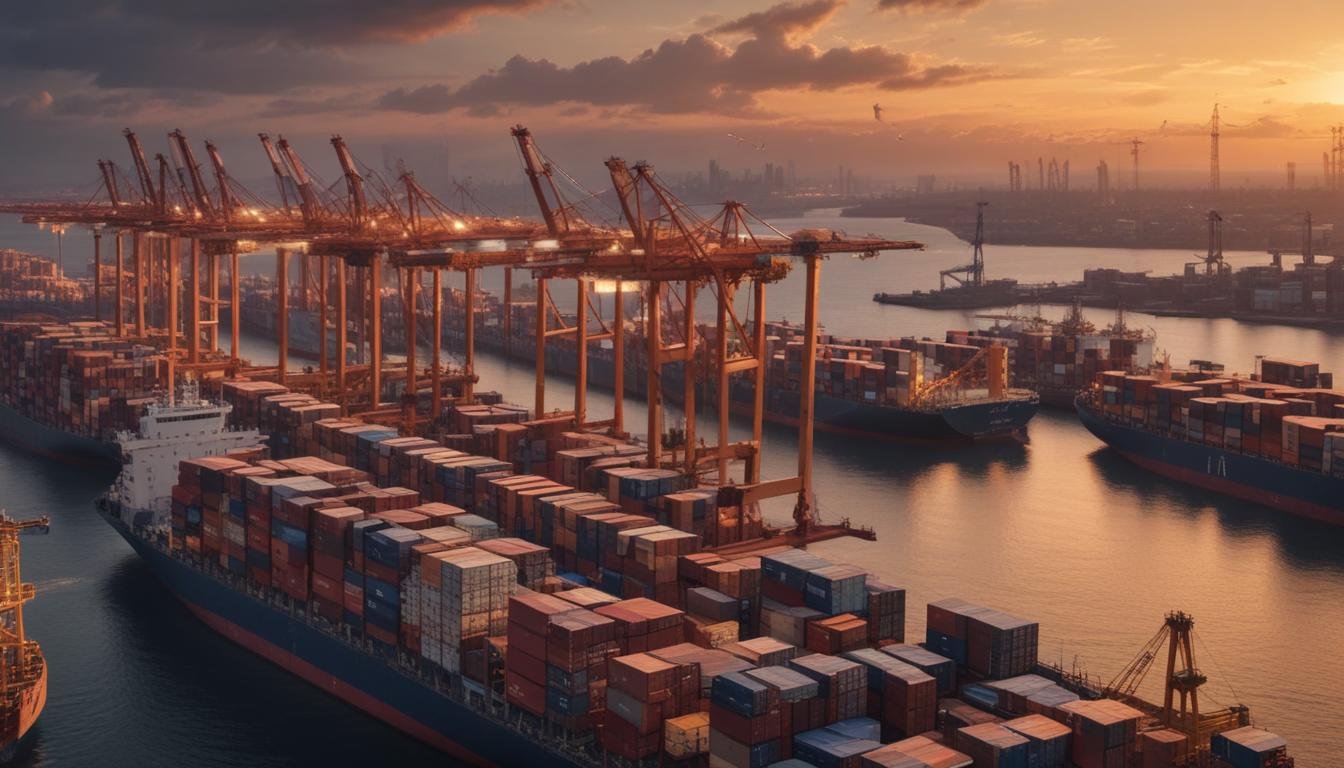Quantum Supply Chains: Weaving Tomorrow’s Logistics with Quantum AI
Ah, supply chains. The unsung heroes (or villains, depending on your perspective) of modern commerce. They’re the intricate dance of materials, manufacturing, and movement that gets that shiny new gadget, organic avocado, or life-saving medication into your eager hands. But let’s be honest, they’re often a chaotic mess, ripe with inefficiencies, delays, and vulnerabilities.
Now, I’ve been tinkering with quantum computing and AI since before they were cool – back when ‘quantum’ meant more about theoretical physics than practical applications. And let me tell you, I’ve seen the future, and it’s… well, it’s not as sleek and shiny as the movies portray. It’s nuanced, messy, but ultimately, it’s *optimizable*. And that’s where the magic of quantum computing comes into play.
The Supply Chain Gordian Knot: Why Classical Solutions Fall Short
Think about it. A modern supply chain involves thousands of variables – from raw material costs fluctuating like a cryptocurrency roller coaster to predicting consumer demand more accurately than a fortune teller. Traditional algorithms, the workhorses of today’s logistics, often struggle to find the absolute *best* solution. They’re good, mind you, but they are limited. They get stuck in local optima – like finding a decent parking spot but missing the primo one just around the corner.
That’s where quantum computing, specifically quantum annealing and quantum optimization algorithms, offers a radical shift. Instead of getting trapped in these local minima, quantum computers can explore a far wider solution space, uncovering optimal routes, inventory levels, and resource allocations that are simply impossible for classical computers to achieve in a reasonable timeframe. Imagine having the power to instantaneously assess all possible pathways and choose the absolute best one – minimizing costs, maximizing efficiency, and mitigating risks.
But, Quantum is Still ‘Coming Soon’, Right?
Yes and no. The hype cycle around quantum computing has been… intense. We’re not quite at the point where every logistics company is running quantum algorithms. Quantum computers are finicky beasts – incredibly sensitive to environmental noise and error-prone. But progress is accelerating. I’ve seen it myself, year after year, the steady march of qubit fidelity and algorithm maturity.
And the beauty is, we don’t need perfect quantum computers to start seeing benefits. Hybrid algorithms, which cleverly combine classical and quantum approaches, are already showing promise. Classical computers can handle the bulk of the computational load, while quantum processors tackle the most computationally intensive optimization problems. This allows us to leverage the strengths of both worlds, achieving results that neither could achieve alone.
What Real-World Problems Can Quantum AI Tackle in Supply Chains?
- Demand Forecasting: Predicting future demand with unparalleled accuracy, reducing waste and minimizing stockouts. Think less “guessing” and more “knowing.”
- Route Optimization: Finding the most efficient routes for transporting goods, minimizing fuel consumption, and reducing delivery times. Imagine trucks navigating like they have an innate sense of the optimal path, dodging traffic jams before they even form.
- Inventory Management: Optimizing inventory levels across the entire supply chain, balancing the costs of holding inventory against the risk of shortages. It’s about having the right product, in the right place, at the right time.
- Risk Mitigation: Identifying and mitigating potential disruptions to the supply chain, such as natural disasters, geopolitical instability, or supplier bankruptcies. This allows for proactive planning and resilience in the face of unexpected events.
A Glimpse Into a Quantum-Powered Future
Picture this: a global supply chain where every decision is data-driven, every process is optimized, and every risk is anticipated. Quantum AI algorithms are constantly monitoring and adjusting, adapting to changing conditions in real-time. Factories operate with perfect efficiency, warehouses are seamlessly integrated, and goods flow effortlessly across borders.
It’s a world where supply chains are not just efficient, but also sustainable. Quantum optimization can minimize waste, reduce carbon emissions, and promote ethical sourcing practices. We can build supply chains that are not just good for business, but also good for the planet.
Of course, challenges remain. We need to develop more robust quantum algorithms, build larger and more reliable quantum computers, and train a new generation of quantum-savvy logistics professionals. But the potential rewards are too great to ignore.
Think about the ethical implications, too. What happens when optimization algorithms become so good that they inadvertently disadvantage certain communities or exacerbate existing inequalities? We need to ensure that quantum AI is used responsibly and ethically, with fairness and transparency at the forefront.
The future of supply chains is quantum. It’s a future where efficiency meets sustainability, where resilience trumps vulnerability, and where data reigns supreme. It’s a future worth striving for.
So, keep your eyes on quantum. It’s not just a buzzword; it’s a revolution waiting to happen. And I, for one, am incredibly excited to see what the next decade brings.

